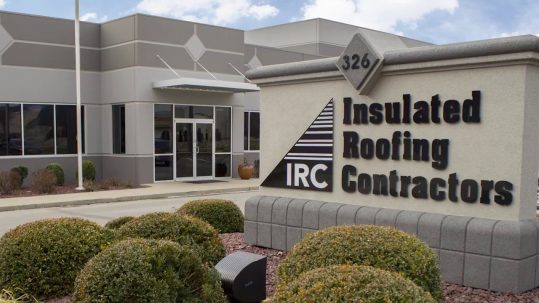
Best Value Approach
FREQUENTLY ASKED QUESTIONS
What is the Best Value Approach (BVA)?
The Best Value Approach is a method that can be used to improve the efficiency and performance of project delivery, project management, risk management, and teaching. BVA has been proven to work not only in the industry, but also in the education environment. The BVA originated from the dissertation of Dr. Dean Kashiwagi at Arizona State University in 1991. The method focuses on identifying and utilizing the expertise of experts. By natural law, experts are the only ones who can make it efficient and effective. IMT states that when a buyer [non-expert stakeholder] attempts to manage, direct and control an expert vendor [tells the vendor what to do] it makes it more difficult to identify and utilize the expertise of the expert vendor [the purchaser or buyer is too busy talking and directing]. The traditional purchaser believes that if they write enough details to the vendor, that any vendor will be able to understand what they are saying. This means that the purchaser or buyer can actually educate, change and control the vendor. By observation this assumption is false. BVA is the only approach that minimizes the direction to the expert. By definition the expert can observe the current situation and identify what needs to be done to meet the project objective. Those that do not have expertise, will attempt to do what the non-expert buyer/purchaser has directed. This increases the risk and cost of the project. The BVA is the only approach that accepts the vendors for who they are, identifies the vendor with the most expertise, and allows the vendor to use their expertise to increase the value and lower the project cost.
Who is using BVA?
The BVA uses common sense and experience to identify and utilize expertise. There are many practitioners who are using the BVA. There are many owners who think they are using the BVA, but who do not understand the common sense and logic of IMT. These owners do not get the results of the BVA [faster procurement, better project execution [on time, on budget, high customer satisfaction]]. The BVA has been exposed to the United States, Canada, Netherlands, Norway, Poland, Austria, Czechoslovakia, Botswana, Saudi Arabia, Malaysia, India and Australia. The BVA can be used in both private and public sectors and meets the requirements of the Federal Acquisition Regulation (FAR) in the United States and the European Procurement Directive for all countries in the European Union.
How does BVA work in practise?
The BVA is vendor centric, it utilizes the expertise of the expert vendor. Where the expert vendor preplans the entire project from beginning to end, simplifies the schedule and plans to allow non-expert stakeholders to understand, includes the functions of all stakeholders who touch the project and tracks time and cost deviation of the project using a weekly risk report (WRR). The WRR creates transparency and helps non-expert stakeholders to mitigate risk. The BVA does not believe that management, direction and control bring project success. Instead the expert vendor uses the WRR to create transparency and assist the non-expert stakeholders to minimize the risk they would normally cause through ignorance.
What are the benefits that I receive by using BVA?
If you are the owner, the identification and utilization of the expertise of expert vendors will reduce overall project cost by 30%, and projects will be delivered on time and on budget, with higher quality.
If you are an expert vendor, the expert will be able to preplan the project, mitigate the risk that normally reduces profit and increases project cost and increase customer satisfaction.
Is BVA really a new concept?
The BVA is not a new idea. It uses common sense and logic to utilize expertise to reduce cost. It is why owners attempt to hire vendor who know what they are doing. The BVA uses simplicity to minimize project problems. Most purchasing/owner stakeholders attempt to manage, direct and control vendors to minimize project risk. 25 years of experience and a number of longitudinal tests which used experts to create transparency, have identified the purchaser/owners as the source of 90% of all project cost and time deviations [see Medcom Study, State of Minnesota case studies, the initial $1B Dutch infrastructure fast track projects, the Arizona Department of Environment Quality study of professional services, the State of Hawaii three year test (1998-2001), the University of Hawaii [one project manager did 33 projects and the average PM load was 3 projects], the United Airlines tests and the Saudi Arabian Classification effort. The BVA is a paradigm shift, which uses efficiency [less effort] and effectiveness [better results] to solve the problem. This leads to a natural result which one purchasing person or project manager can do the work of ten traditional personnel. This raises a fear with many purchasing professionals who question their value and fear that their job may go away. The fear of purchasing and profession procurement personnel is very similar to the fear of the overall movement toward automation in our society.
How long does it typically take to run a BVA project?
It depends on the project. The overall performance of tests have led to reducing procurement time by 50%, and having a project execution of 98% on time, and on budget with 98% customer satisfaction. It is the duty of the owner to ensure that these results are met by hiring an expert Best Value consultant. This can be easily determined by requesting the performance information [on time, on budget, customer satisfaction] from the BV expert.
Does BVA leads to higher costs to create more value?
The BVA objective is to identify and utilize expertise to get the best value for the lowest cost. When traditional purchasing professionals attempt to manage, direct and control vendors by the use of a prescriptive contract, they are actually increasing the cost by increasing the complexity of the project. Best value experts simplify, minimize risk caused by non-expert stakeholders, and increase their profit by being efficient and effective. This lowers the overall project cost.
How to create an BVA environment?
Go to the source documents created by the founder of the BVA which you will find on this website. Verify that the BV expert who is being utilized has performance information on BV projects that they have delivered. There are A+ and A BV experts who are listed on the website. However, it is critical to ask them to show their project execution performance [project finished on time, on budget and customer satisfaction.] there are many BV experts who have delivered the procurement but have not actually delivered the project. Owners beware to simply ask for the critical performance information.
What are the major challenges creating an BVA environment?
It is a change of paradigm. It includes:
Owners should identify a simple objective and use observable characteristics that are defined numerically. These metrics should be understood by all.
The owner/purchasing people should not be thinking and making decisions [increase risk].
The BVA should be simple [faster, less work and easier].
The expert vendors should prove that they are expert on the unique project being requested [using simple metrics: how many times they have done this specific type of project, and use metrics to identify the difference between this project and their previous projects]
The BV expert vendor should then preplan and have a detailed project plan with cost, a simplified milestone schedule [defined by metrics] with cost, and a risk mitigation plan that identifies and manages risk that is created by the non-expert stakeholders.
The expert vendor should use a WRR to track project time and cost deviation to create transparency.
This is a change of paradigm that goes against traditional practices. This is very similar to utilizing expertise to simplify the delivery of services. It has the same impact of automation.
In which industries and markets is BVA commonly used?
In all markets and industries. The greater the risk [poor performance] the more value of the BVA.
How do you recognize an expert vendor?
They can see into the future, make things simple, and mitigate risk by creating transparency to help non-expert stakeholders.
How does somebody become an BVA expert?
By understanding the principles of IMT and the principles of the BVA identified above. Remember, the more education one requires, the greater the risk that the person may not be capable of understanding.
What education and training is available to learn about BVA?
The books are available at pbsrg.com and through local A+ licensed experts.
This website pbsrg.com is the original source of the BVA and IMT.
A+ experts are often giving education and exposure to the BVA.
An annual conference is held every year in January in Arizona by the founder of the IMT and BVA.
What has been the biggest succes of BVA so far?
The biggest successes have been by the founder of the IMT and BVA over 25 years. The success has been documented to be observable. Other A+ experts who have project execution performance information have added to the database of expertise.
AWARDS
2016 Saint Louis School Academic Innovation Award
Saint Louis School (SLS) awards the 2016 Education Innovation Award to Professor Dean Kashiwagi (Class of 70′), the Performance Based Studies Research Group, KSM, and the Leadership Society of Arizona (LSA) for their donation of the “Leadership and Deductive Logic” course to SLS and continual support of the NCAA approved course. PBSRG has donated over $65,000 of intellectual property license rights, support services, electronic textbooks, course materials, and in-person teaching for the “Leadership and Deductive Logic” Class [2015-2016].

2012 IFMA Fellowship – Dr. Dean Kashiwagi
Established to recognize members dedicated to IFMA and the facility management profession, the IFMA Fellowship Program creates an elite core of respected leaders who act as advisers to and ambassadors of the association. Being named an IFMA Fellow is the highest honor the association can bestow on a member. In 2012, Dr. Dean Kashiwagi became one of only 90 professionals that have received the distinction thus far. Kashiwagi was recognized for his “inspiring, engaging and tireless” FM education and research, which has spanned over two decades. Read more about this award

2012 Dutch Sourcing Awards – Best Overall Procurement Effort & Operational Excellence – Rijkswaterstaat
The Dutch Sourcing Awards are presented annually to the purchasing teams that have demonstrated the most impressive purchasing performance in the Netherlands over the past year. In 2012, Rijkswaterstaat won the award for Best Overall Procurement Effort as well as the Operational Excellence category. Under great political and social pressure, the organization has implemented Best Value Procurement on a billion dollar road network project. This sparked the growth of Best Value Procurement in the Netherlands.

2011 IFMA MSP Chapter Facility Practitioner of the Year
In January 2012, The Minneapolis/St. Paul Chapter of IFMA presented its 2011 Facility Practitioner of the Year award to Tom Shultz, Director of Facilities for Intermediate District 287, for his use of the Best Value Model. Using Best Value, he was able to transform the way his organization selected and managed the construction of their new facility in New Hope. Rather than using the traditional price‐based procurement processes, his team used best‐value processes to select the highest performing contractors who had an affinity to identify and minimize risk.

2011 George Cronin Silver Award for Procurement Excellence – State of Idaho
The 2011 George Cronin Silver Award was presented to the State of Idaho for its Best Value Model. Idaho teamed with the Performance Based Research Studies Group in an effort to improve the success rate and decrease the risks associated with service contracts. Since implementation, the state has applied these Best Value practices to a variety of programs internally, has promoted their plan to at least two other states and has assisted Arizona State in transforming what started as a construction-focused process to a mainstream public procurement sector solution.

2009 IFMA Educator of the Year Award – Dr. Dean Kashiwagi
Each year, The International Facility Management Association recognizes groups and individuals who have made significant contributions to the facility management profession and the association. In 2009, their Distinguished Educator Award went to Dr. Dean Kashiwagi, for his numerous accomplishments in education and research during the past year. One significant accomplishment was receiving a Fulbright Scholarship to share his facility and project management practices with the people of Botswana, Africa.

2008 CIB Research Innovation of the Year – University of Minnesota
The University of Minnesota (Capital Planning and Project Management Group) was awarded the 2008 Research Innovation of the Year Award by the CIB for their use of Best Value Model in the delivery and management of construction and design services.

2008 CIB Programme Committee (PC) Commendations – Dr. Dean Kashiwagi
The CIB Programme Committee awards the annual PC Commendations for extraordinary performance in the CIB Programme of Activities. In 2008, CIB Task Group 61, under joint coordination of Kashiwagi, was upgraded to a working commission in 2008 and attracted more new CIB Members than any other CIB Commission.

2008 Fulbright Scholarship Award – Dr. Dean Kashiwagi
The Fulbright Program is one of the most prestigious awards programs in the world. The program operates in 144 countries and awards only 7,000 grants annually. In 2008, Dr. Dean T. Kashiwagi was awarded a Fulbright Scholar grant to lecture and conduct research at University of Botswana (Africa).

2007 COAA Gold Award – City of Peoria
The Construction Owners Association of America has an annual Project Leadership Award that recognizes excellence in project management & promotes leadership, professionalism & excellence of owners & developers involved in the construction process. In 2007, the City of Peoria received the COAA’s highest award (Gold Award) for the success of the Rio Vista Recreational Center. This project was procured using the Best Value Model.

2007 FCM’s Station Style Gold Medal in Design Excellence – City of Peoria
Every year, Fire Chief Magazine hosts a competition recognizing architects and fire departments for outstanding achievements in fire station design and construction. In 2007, The City of Peoria’s Jomax Fire Station #7 was the recipient of this award, judged by a panel of architects and fire service executives. The station is a modern 11,800 sq. ft., 3-bay satellite station, aimed at minimizing emergency response time with an efficient layout, and built with sustainable / green strategies and materials. This project was procured using the Best Value Model.

2005 H. Bruce Russell Global Innovators Award – Harvard University
The CoreNet H. Bruce Russell Global Innovator’s Awards program showcases solutions, best practices & innovations in corporate real estate and workplace management. In 2005, Harvard University received CoreNet’s highest award for innovation for transforming their organization using the Best Value Model.

2001 Pono Technology Award – State of Hawaii
The Pono Technology Award is presented to organizations in Hawaii that have excelled at successfully implementing information technologies for the betterment of the enterprise. In 2001, the State of Hawaii was recognized for its innovation in improving productivity and performance using the Best Value Model.

















